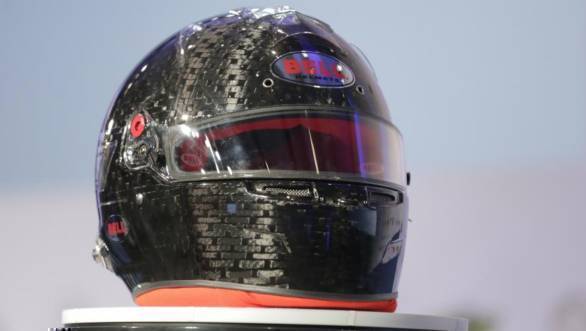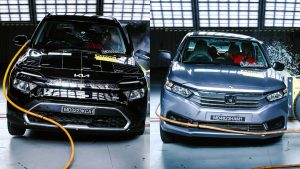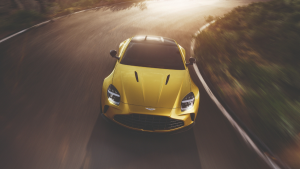FIA reveals new "ultra-protective" helmet for Formula 1 to be used starting 2019
The FIA has released a new standard for top-end helmets that must be used by all drivers in all major championships, starting with Formula 1 in 2019. The helmets will become mandatory for drivers in F1 next year, and the helmets will then be rolled out in other major championship series soon after.
The move comes after the FIA has worked over the course of a decade to create a helmet standard that will help protect drivers more than ever before.
 The new helmet design will come into use in F1 in 2019 with other championships to follow soon after
The new helmet design will come into use in F1 in 2019 with other championships to follow soon after
The standard, called the FIA 8860-2018, lays down a series of design and performance requirements that all helmet manufacturers must achieve in order to be allowed to provide gear for all the top FIA championships. The helmets offer a large number of safety benefits that include "advanced ballistic protection, increased energy absorption and an extended area of protection for drivers," said an FIA press release.
FIA Safety Director, Laurent Mekies said of the new FIA 8860-2018 standard, "The current top-end helmets are already the safest in the world but the new standard will take them to the next level. It is important for all of our safety research that we continually strive to improve and this is why we are requiring all manufacturers to meet this tougher standard for our championships."
While, during the research stages, the FIA worked closely with helmet manufacturers like Stilo, Bell Racing, Schuberth and Arai, the production versions of these helmets for the 2019 F1 season now need to be manufactured by the respective manufacturers.
Changes to the helmets as stated by the FIA include:
- Top of visor opening lowered by 10mm to incorporate advanced ballistic protection that achieves unprecedented levels of safety during impact from debris.
- Extended areas of protection on sides to offer compatibility with latest single-seater headrests and closed car seat-side head protection systems, ensuring energy management is exactly where headrests are positioned.
- Helmet shell construction using advanced composite materials to ensure it is not only tough but also resistant to crushing and penetration.
- Test methods include variable crash speeds to account for different accidents and a range of weights to account for different mass headforms.
Toughened Tests:
Under the new FIA 8860-2018 standard all helmets must withstand the following tests:
- Standard impact: Helmet impact at 9.5m/s. Peak deceleration on 'driver's head' shall not exceed 275G.
- Low velocity impact: Helmet impact at 6m/s. Peak deceleration shall not exceed 200G with a maximum average of 180g.
- Low lateral impact: Helmet impact at 8.5m/s. Peak deceleration shall not exceed 275G.
- Advanced Ballistic Protection: A 225g metal projectile fired at 250km/h. The peak deceleration shall not exceed 275G.
- Crush: A 10kg weight falling 5.1 metres onto helmet. Lateral and longitudinal tests. The transmitted force should not exceed 10 kN.
- Shell penetration: A 4kg impactor dropped onto helmet at 7.7 m/s.
- Visor penetration: Air rifle fires 1.2g pellet at visor. Pellet must not penetrate the interior of the helmet.
- Visor coating: Transmitter test to ensure colouration and vision is not significantly changed or distorted.
- Retention system: Roll-off test and dynamic test to ensure strength of chin strap and its attachments.
- Chin guard linear impact: Impact test with full headform at 5.5m/s. The peak deceleration shall not exceed 275G.
- Chin guard crush: Hammer hits chin guard and measures ability to keep impact away from the head.
- FHR mechanical strength: Test to ensure high strength of attachment points for Frontal Head Restraints.
- Projection and surface friction: Test to ensure helmet surface uniformity and that friction is minimised. Shell surface also subjected to BARCOL hardness test for resistance to penetration.
- Flammability: Helmet exposed to 790 C° flame; it must self-extinguish once flame is removed.
Related Stories
Top Stories
Latest Videos
Most Popular
- Budget Sportbike Showdown: Kawasaki Ninja 500 vs Aprilia RS 457 vs Yamaha YZF-R3
- Mumbai-Pune Expressway speed restrictions updated
- Upcoming Mahindra XUV 3XO: All you need to know
- 2014 Triumph Daytona 675 vs 2024 Kawasaki ZX6R - A Decade of Evolution in Supersport Motorcycles
- 2024 Hyundai Creta vs Toyota Urban Cruiser Hyryder vs Skoda Kushaq comparison review - the hype is real?














